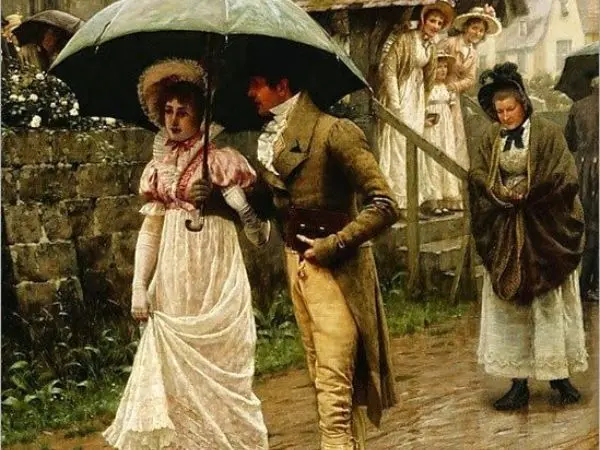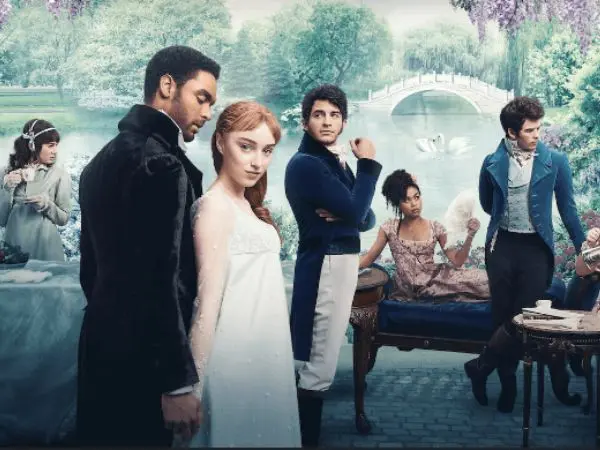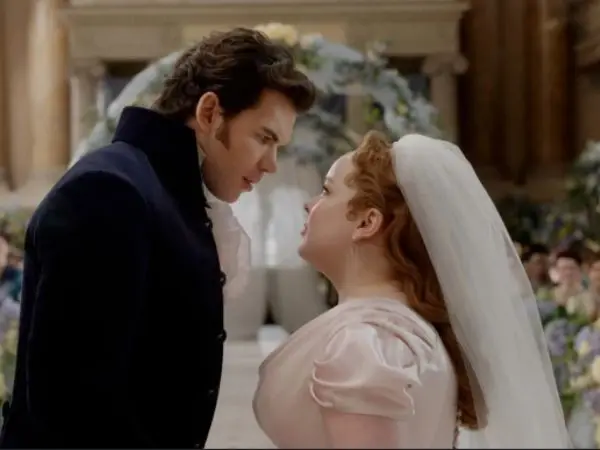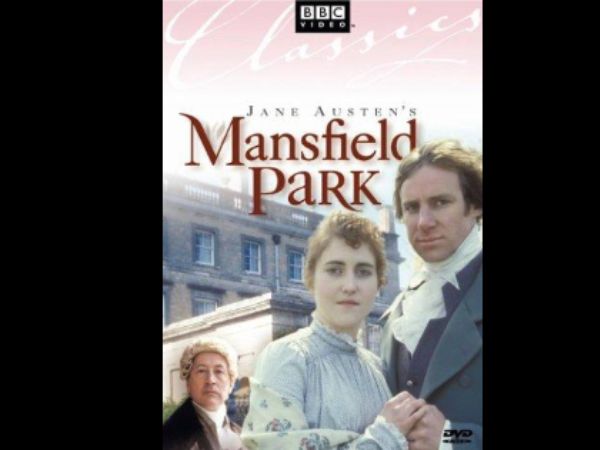What do Jane Austen and Bridgerton have in common? Here’s where classic literature meets pop culture.
Reading the legendary British author Jane Austen, you can almost picture the characters drifting through the fine cobbled streets of Bath, dressed in empire-line gowns, with the soft clatter of horses’ hooves echoing down the lane.
Now, in Shonda Rhimes’ Bridgerton, enter the candlelit ballrooms of London’s high society marriage market, full of scandal, whispered gossip, and… wait, is that Ariana Grande playing in the background?
These are the imagined worlds of Jane Austen and Netflix’s Bridgerton, two wildly different takes on Regency era England. These two stories were created centuries apart, but they are united by their focus on love, status, and the social games people play.
You might think we’re reaching here, as surely they cannot be so similar? But if you look closely, the similarities in tone, theme, and the way they hold up a mirror to society, past and present, is evident.
Indice dei contenuti
Two worlds, one era
To understand what makes both Austen’s literary work and Bridgerton so captivating, it’s important to look at the era they share. Both are set in Regency England, the early 1800s, but they reflect the world in very different ways.
Jane Austen’s England
Jane Austen grounds her stories in a time of strict societal codes, where marriage is much less about love than it is about heirs and economic security. Her characters tend to belong to the gentry, the respectable middle-upper class, and it’s through this lens that she laces her stories with her famously sharp, ironic views on social dynamics.

Bridgerton’s take
Shonda Rhimes’ Bridgerton, adapted from Julia Quinn’s novels, plays with the same era and setting, but is a wild reimagining. Its version of Regency London is packed with opulence, gossip, and drama, all supported with a modern flair, including a diverse cast and a classical take on pop music. It’s an alternate history twist on the period, where familiar social conventions are still important, but these expectations are pushed, stretched, and remixed for a modern audience.

Love, marriage, and the burden of status
At the heart of both Austen’s novels and Bridgerton are themes we will come back to time and time again: love, societal expectations, and the complexity and power dynamics within marriage.
Love that challenges convention
Both Austen and Bridgerton treat love as something that can challenge the norms of the era. Think of Elizabeth Bennet and Mr Darcy in Pride and Prejudice, defying the rigid class divide.
Similarly, Daphne Bridgerton and the Duke of Hastings begin a relationship out of pure convenience, which then develops into something deeper, testing the rules of their time period and reshaping them.
Marriage: business or bond?
Marriage in both worlds is a social and economic contract. But, both Austen and Bridgerton use this idea to critique the systems behind it.

Where Austen hints at the cold realism behind so many Regency marriages, Bridgerton sometimes brings it into more… ahem… heated focus, with scenes that would most certainly have made Austen blush. Regardless, Bridgerton still underscores the same point: marriage is usually more of a negotiation than a romance.
Telling stories, two different ways
The biggest stylistic difference lies in tone.
Austen’s narrative voice is famously subtle and sly. Her sharp, cutting social commentary is softened by her elegance and humour, with dialogue that reveals her characters’ inner lives with a kind of polite precision. Nothing is overstated, and everything has meaning.
In contrast, Bridgerton favours spectacle and sensationalism. Its stories are dramatic and emotionally heightened. Think scandal, heartbreak, desire, and betrayal takes centre stage, but it still carries Austen’s legacy with its sharp awareness of class, gender, and the burdens of social status.
Women take centre stage
Austen’s heroines, such as Elizabeth Bennet to Emma Woodhouse, are smart, witty, and often ahead of their time. They question the roles expected of them and push back fiercely against the constraints placed upon them.
Bridgerton picks up this thread and runs with it. Daphne and her sister Eloise represent two sides of the same coin: Daphne works within the system, while Eloise rebels against it. Both navigate society on their own terms, with more freedom and more complexity than their Austen predecessors.
Echoes of Austen in Bridgerton
It’s clear that Bridgerton doesn’t just exist in Austen’s shadow. In fact, it actively engages with her work.
Reason and feelings in Bridgerton
Like Elinor and Marianne Dashwood in Sense and Sensibility, Daphne and Eloise offer contrasting approaches to life and love. One is measured and composed, the other is outspoken and idealistic.
Pride and Prejudice in Bridgerton
Marina Thompson’s precarious social situation as a pregnant unmarried woman recalls Charlotte Lucas’ own compromises in Pride and Prejudice. Both highlight how women have to strategise and play games in order to survive in patriarchal societies.
Mansfield Park and childhood trauma
Just as Fanny Price carries the emotional weight of a difficult upbringing in Mansfield Park, so too does Simon, the Duke of Hastings, whose past shapes every choice he makes.

Emma and privilege
Daphne, like Emma Woodhouse, is beautiful, wealthy, and seemingly in control. Yet her story explores how even the most privileged women are constrained by societal expectations, simply because they are women.
Persuasion and forbidden love
Anthony Bridgerton and Kate’s relationship is marked by social barriers, echoing Anne Elliot and Captain Wentworth in Persuasion. Both stories are shaped by class and longing.

Jane Austen and Bridgerton: Final Thoughts
Austen’s works have stood the test of time because they continue to speak to universal themes — love, independence, pressure, pride. Bridgerton updates these themes for a modern audience, blending period detail with modern energy to make historical storytelling feel fresh again.
More than just entertainment, both Austen’s novels and Bridgerton invite us to think critically about how society shapes our choices — and how we push back.
If this has piqued your interest, you might find yourself drawn not just to the stories, but to the places behind them. Imagine studying in the UK and walking the very streets that inspired Jane Austen — from the Roman baths and Georgian terraces of Bath to the grand country estates that echo through both Austen’s fiction and Bridgerton’s visual world.
These stories come alive when you immerse yourself in the culture that shaped them. Whether you’re a literature lover, history enthusiast or simply curious about how old worlds meet new ones, there’s real value in stepping into their settings — literally.




